Get Your Copilot

Create Chatbot For Neurologists
Welcome to Copilot.Live Chatbot for Neurologists, transforming medical education and patient care with advanced AI. Enhance diagnostics and empower neurologists with cutting-edge technology. Revolutionize your practice with our innovative neurology chatbot today.
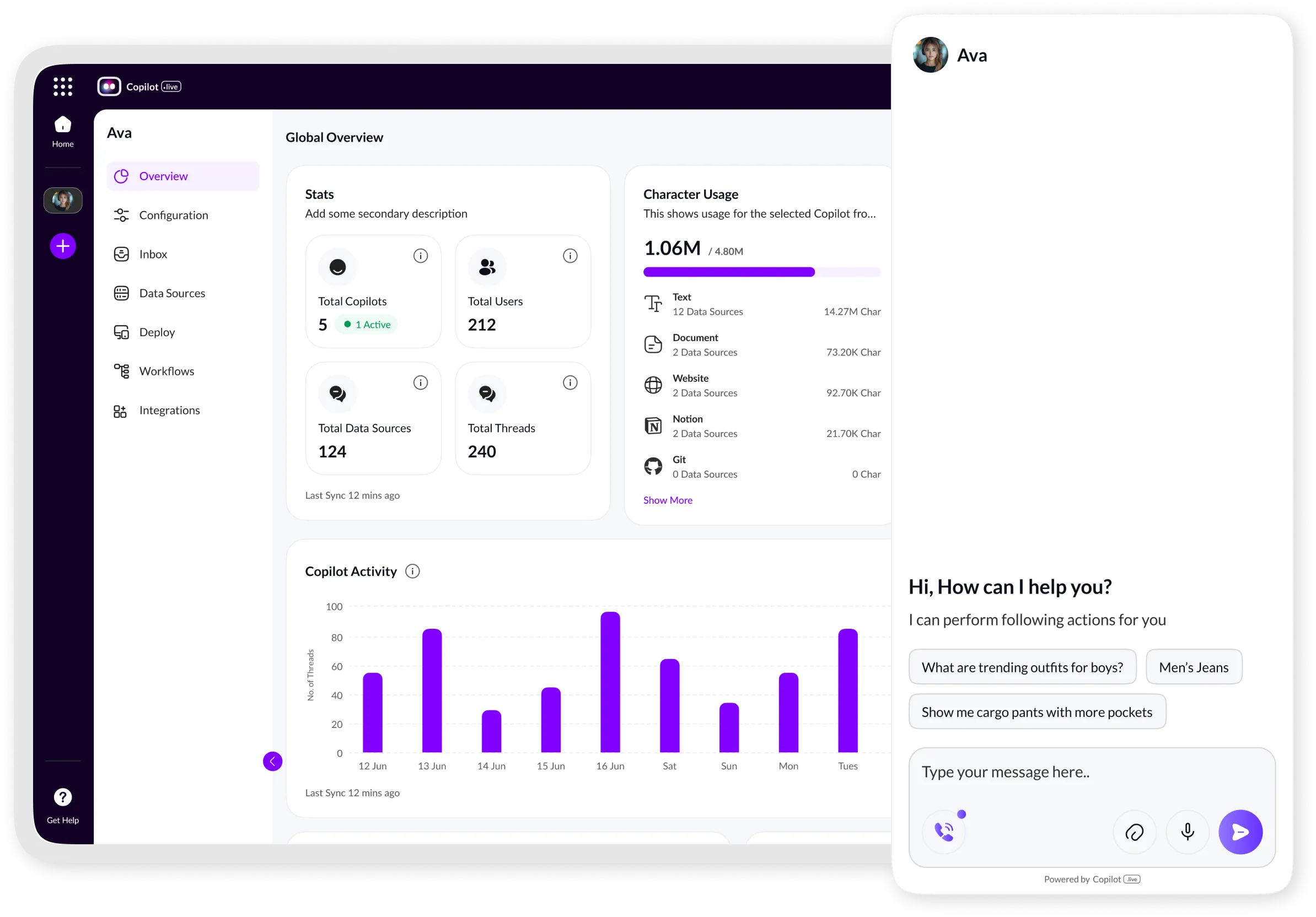
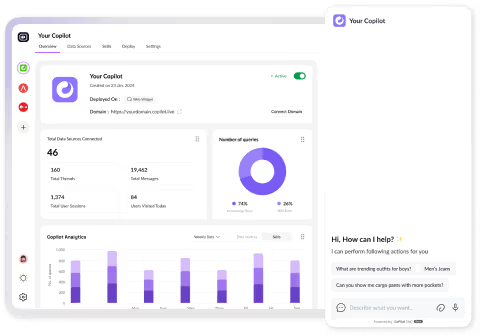
Create Chatbot For Neurologists
Welcome to Copilot.Live Chatbot for Neurologists, transforming medical education and patient care with advanced AI. Enhance diagnostics and empower neurologists with cutting-edge technology. Revolutionize your practice with our innovative neurology chatbot today.


Build an AI assistant in 3 minutes
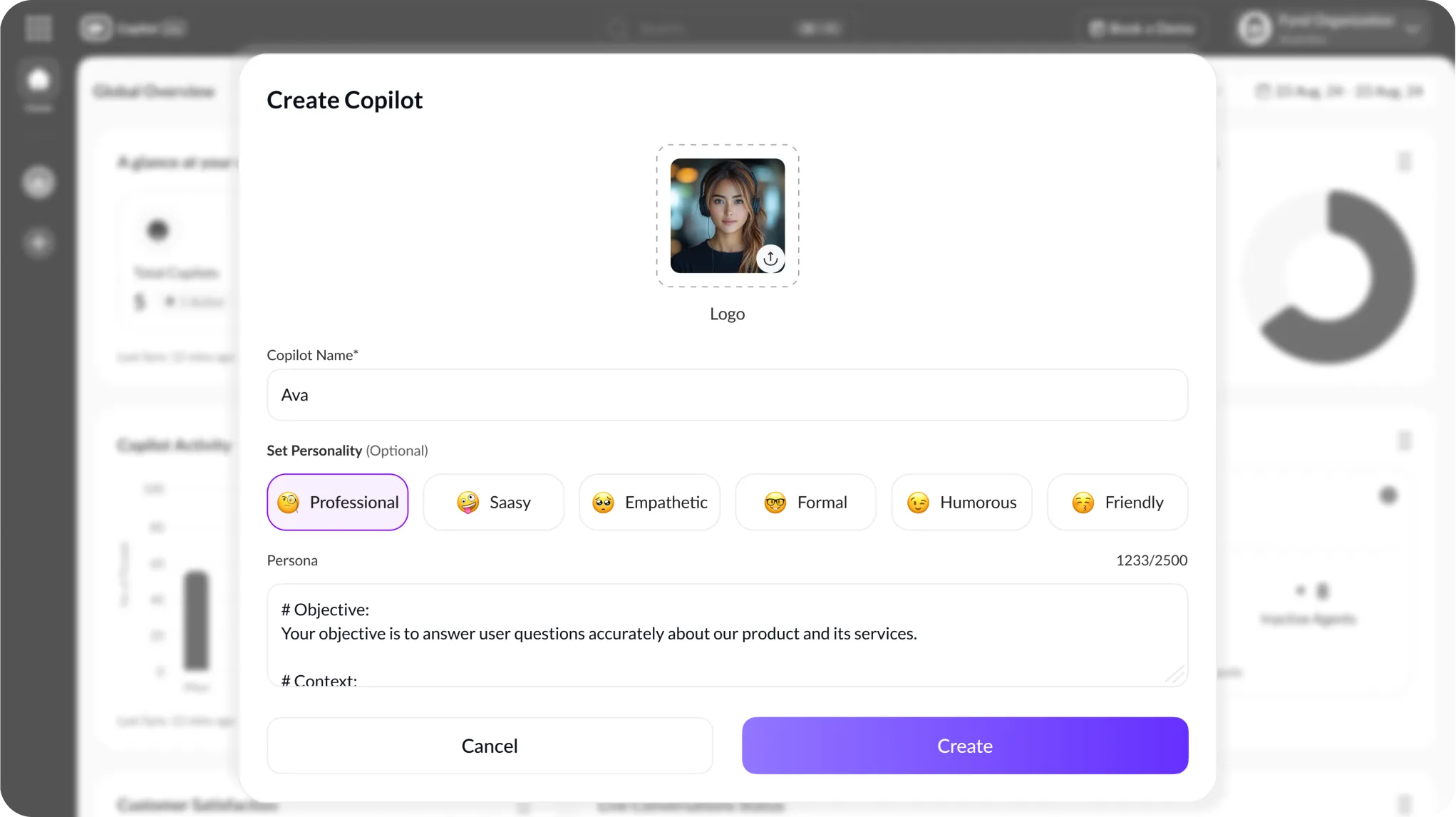
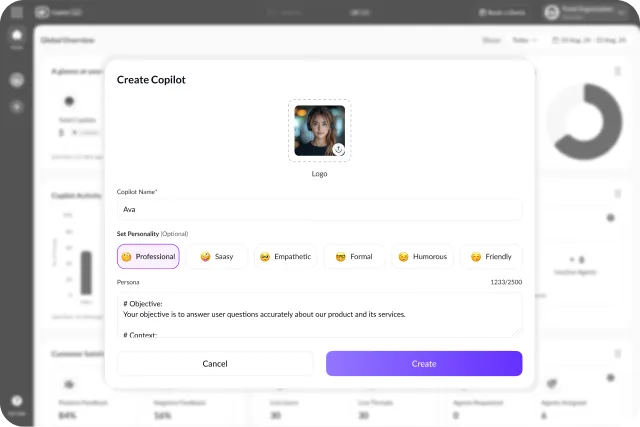

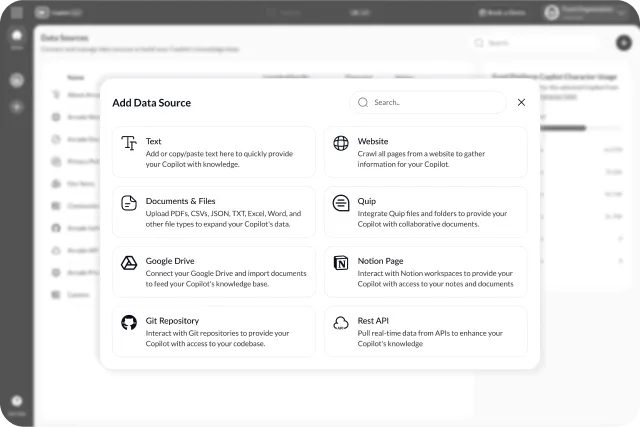

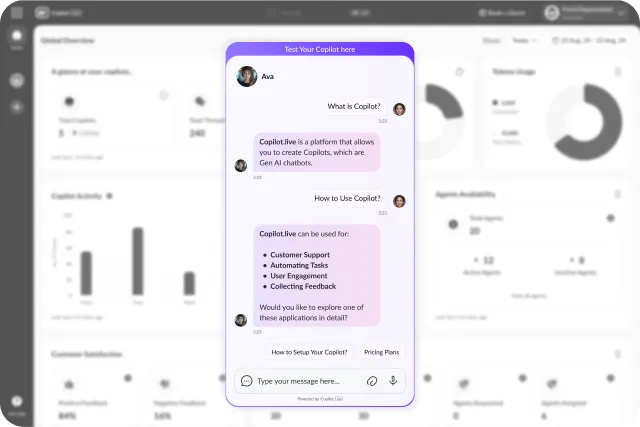
Creating Your Neurology Chatbot With Copilot.Live
Define Objectives
Clearly outline what you want your neurology chatbot to achieve whether it's aiding medical education, supporting patient interactions, or enhancing diagnostic capabilities.
Customize Functionality
Utilize Copilot.Live tools to tailor the chatbot's functionality. Implement features like natural language processing (NLP) for understanding medical queries.
Design User Experience
Create a seamless interface (UI) and user experience (UX) design. Ensure intuitive navigation, accessibility features, and clear communication of the chatbot's capabilities.
Deploy And Monitor
Launch your chatbot on Copilot.Live platform. Monitor its performance closely, analyzing user interactions, feedback, and effectiveness in achieving objectives.

Empower Neurology Practice With Copilot.Live
Explore the cutting-edge potential of neurology-focused chatbots with Copilot.Live. Our platform empowers neurologists to create intelligent chatbots that revolutionize patient care, medical education, and diagnostic support. By harnessing Copilot.Live robust tools and resources, neurologists can develop chatbots capable of understanding complex medical queries, delivering accurate information, and enhancing communication between healthcare providers and patients. Whether you streamline patient interactions, provide on-demand medical advice, or improve diagnostic accuracy, our platform offers the essential building blocks.
From integrating the latest advancements in natural language processing (NLP) to designing intuitive user interfaces, Copilot.Live ensures your chatbot meets the highest functionality and user experience standards. Embrace the future of neurology practice with a chatbot that enhances efficiency and empowers better patient outcomes. Join Copilot.Live today to leverage the power of AI-driven technology in transforming how neurologists interact with medical information and deliver care.
Why Choose Copilot.Live For Your Neurologist Chatbot Needs?
Advanced Analytics Integration
Seamlessly integrate tools to monitor chatbot performance, analyze user interactions, and derive actionable insights. This feature empowers neurologists to refine responses, optimize user experience, and enhance diagnostic support based on data-driven feedback.
Customizable Decision Trees
Utilize intuitive tools to build complex decision trees tailored to neurology-specific scenarios. This feature allows for precise navigation through diagnosis, treatment options, and patient education, ensuring accurate information dissemination and personalized support for diverse patient needs.
Natural Language Understanding
Implement robust natural language understanding (NLU) capabilities to enhance conversational depth and accuracy. This feature enables chatbots to interpret nuanced queries, understand context, and deliver relevant information effectively, fostering trust and satisfaction among users seeking neurology-related guidance.
HIPAA Compliance And Data Security
Ensure compliance with healthcare regulations and prioritize data security with built-in HIPAA-compliant features. This includes encrypted data transmission, secure storage protocols, and adherence to patient privacy standards, safeguarding sensitive medical information exchanged via the chatbot platform.

Advanced Chatbot Solutions For Neurologists
Neurologists require efficient tools to enhance patient care and streamline communication in today's rapidly evolving healthcare landscape. Our platform, Copilot.Live, offers specialized chatbot solutions explicitly tailored for neurology practices. Designed to provide accurate information and support based on the latest medical insights, our chatbots ensure that neurologists can effectively engage with patients, answer queries promptly, and offer guidance on symptoms, treatments, and preventive care. Copilot.Live prioritizes delivering reliable information sourced directly from reputable medical resources.
Our chatbots are equipped with sophisticated algorithms to comprehensively understand and respond to neurology-related inquiries, ensuring patients receive credible guidance around the clock. By leveraging advanced technologies like natural language processing and customizable decision trees, neurologists can optimize patient interactions and focus more on clinical care. With Copilot.Live, neurology practices can enhance operational efficiency, improve patient satisfaction, and stay at the forefront of healthcare innovation with AI-powered chatbot solutions.
Key Features & Benefits Of Copilot.Live Chatbot For Neurologists
Welcome to the cutting-edge world of user behavior tracking, where understanding interactions and preferences empowers businesses to deliver personalized experiences and drive strategic growth.
Customizable Patient Education Modules
Tailor educational content to meet specific neurology-related needs. From explaining complex conditions to outlining treatment options, these modules empower neurologists to educate patients effectively through interactive and personalized content.
Intelligent Appointment Scheduling
Streamline the booking process with AI-driven scheduling capabilities. Neurologists can optimize their calendars, manage patient appointments seamlessly, and minimize scheduling conflicts, enhancing operational efficiency and patient convenience.
Automated Symptom Assessment Tools
Utilize advanced algorithms to assess and triage patient symptoms accurately. These tools help neurologists gather pertinent information, prioritize patient cases based on severity, and recommend appropriate actions promptly, ensuring timely care delivery.
Data-Driven Analytics Dashboard
Gain insights into patient interactions and operational metrics with a comprehensive analytics dashboard. Neurologists can track chatbot performance, patient engagement trends, and clinical outcomes, enabling informed decision-making and continuous improvement in patient care strategies.
Launch Your AI-Powered Chatbot For Neurologists In No Time
Natural Language Processing (NLP)
Natural Language Processing (NLP) is a branch of artificial intelligence that enables computers to understand, interpret, and generate human language. It involves algorithms and techniques that allow machines to process and analyze large amounts of natural language data. NLP tasks include sentiment analysis, named entity recognition, language translation, and speech recognition. By applying machine learning models and linguistic rules, NLP systems can extract meaning from text, derive context, and respond intelligently. NLP is crucial in developing applications like chatbots, language translation services, and text summarization tools, aiming to bridge the gap between human communication and computational understanding.
Sentiment Analysis
Sentiment analysis is a natural language processing technique used to determine the sentiment expressed in a text. It involves identifying and categorizing the emotional tone conveyed in sentences or documents, typically positive, negative, or neutral. This process utilizes machine learning algorithms to analyze the text's words, phrases, and context to infer the underlying sentiment. Sentiment analysis finds wide application in social media monitoring, customer feedback analysis, brand reputation management, and market research. By automating sentiment analysis, businesses can gain valuable insights into public opinion, customer satisfaction, and trends, enabling informed decision-making and targeted actions based on sentiment trends.
Advanced Reporting And Analytics
Advanced reporting and analytics use sophisticated tools and techniques to extract, process, and analyze large volumes of data for actionable insights and decision-making. It involves employing advanced statistical methods, data mining, machine learning algorithms, and visualization techniques to uncover trends, patterns, and correlations within datasets. Advanced reporting goes beyond basic descriptive statistics to provide deeper insights into business performance, customer behavior, market trends, and operational efficiency. By leveraging these capabilities, organizations can make informed decisions, optimize processes, predict outcomes, and gain a competitive edge in their respective industries.
Customizable Branding And Themes
Customizable branding and themes allow businesses to personalize their applications' or websites' appearance and feel to align with their brand identity. This feature enables users to modify the interface's colors, logos, fonts, and styles, ensuring consistency across all customer touchpoints. Companies can reinforce brand recognition, create a cohesive user experience, and build trust with their audience by offering customization options. Moreover, customizable branding and themes empower organizations to adapt swiftly to seasonal promotions, marketing campaigns, or rebranding efforts without needing extensive technical expertise or development resources. This flexibility enhances brand perception and customer engagement while maintaining a professional and cohesive visual identity.
Lead Generation Forms
Lead generation forms are digital forms designed to capture information from potential customers interested in a product or service. These forms typically gather contact details such as name, email address, phone number, and sometimes additional qualifying information like company size or specific needs. Businesses use lead generation forms on websites, landing pages, or within chatbots to convert website visitors or app users into leads for further nurturing and sales follow-up. By strategically placing these forms and integrating them with customer relationship management (CRM) systems, companies can streamline lead capture processes, improve lead quality, and drive sales growth through targeted marketing and personalized customer interactions.
Integration With CRM Systems
Integration with CRM (Customer Relationship Management) systems refers to the ability of software or platforms to connect and share data with CRM applications seamlessly. This integration allows businesses to synchronize customer information, interactions, and transactions between different systems, ensuring a unified view of customer data across the organization. Companies can streamline workflows, improve data accuracy, and enhance customer relationship management efforts by integrating with CRM systems. This connectivity enables automated data syncing, real-time updates, and better analytics and reporting capabilities, empowering businesses to make informed decisions and provide personalized customer experiences based on comprehensive and up-to-date information.
Scheduled Messages
Scheduled messages refer to the capability within messaging or communication platforms to compose and send messages at a specified date and time. This feature is handy for businesses and individuals who want to plan their communication, ensuring timely delivery and maximizing engagement with their audience across different time zones or peak activity periods. By scheduling messages, users can maintain consistent communication without being constrained by real-time availability, thereby enhancing productivity and efficiency in managing their messaging campaigns or personal communications. It also allows for strategic planning of content dissemination, ensuring messages reach recipients at the most optimal times for better impact and response rates.
Role-Based Access Control
Role-based access control (RBAC) is a security approach that restricts system access based on the roles of individual users within an organization. Each user is assigned specific roles, and access permissions are granted based on these roles. RBAC ensures that only authorized personnel can access certain resources or perform specific actions, enhancing data security and minimizing unauthorized access or breach risks. This model simplifies administration by centralizing access management and reducing permissions management's complexity across large organizations. RBAC also supports compliance with regulatory requirements by enforcing least privilege principles, where users only have access to the resources necessary for their roles, thereby safeguarding sensitive information and maintaining operational integrity.
A/B Testing Capabilities
A/B testing capabilities refer to the functionality within software or platforms that allows users to conduct experiments comparing two versions (A and B) of a webpage, email, advertisement, or other digital content. This method determines which version performs better in achieving specific goals, such as click-through rates, conversions, or user engagement. By randomly showing variant A or B to users, A/B testing provides valuable insights into user preferences, behaviors, and preferences. It helps optimize marketing strategies, user experiences, and product designs by identifying which variations yield the most favorable outcomes. This iterative testing process enables data-driven decision-making, improving performance, higher conversion rates, and enhanced user satisfaction across digital platforms.
Interactive Decision Trees
Interactive decision trees are graphical representations or tools that guide users through a series of choices or steps, leading to different outcomes based on their selections. Unlike static decision trees, interactive ones allow users to actively engage by making decisions at each node, which branch out to subsequent nodes or paths. These decision trees are commonly used in various applications such as customer support, troubleshooting guides, educational modules, and product recommendation systems. They provide a structured way to present complex information, helping users navigate options based on their preferences or needs. Interactive decision trees enhance user experience by offering personalized guidance, simplifying decision-making processes, and ensuring users reach desired outcomes efficiently and effectively. They are valuable tools for enhancing user engagement, improving customer satisfaction, and facilitating self-service interactions across digital platforms.
GDPR Compliance Tools
GDPR compliance tools are software solutions designed to help organizations adhere to the General Data Protection Regulation (GDPR) guidelines the European Union (EU) set forth. These tools typically offer features such as data mapping and inventory, consent management, privacy policy generators, cookie consent management, data subject request management (DSAR), and data breach notification capabilities. They enable businesses to track and manage personal data throughout their lifecycle, ensuring transparency and accountability in data processing activities. GDPR compliance tools also assist in conducting data protection impact assessments (DPIA) and maintaining records of processing activities (RoPA), which are crucial requirements under GDPR. By using these tools, organizations can mitigate risks associated with non-compliance, protect individuals' privacy rights, and demonstrate compliance to regulatory authorities and stakeholders.
API For Custom Integrations
An API (Application Programming Interface) for custom integrations allows developers to connect external applications and services with a chatbot platform. It provides a set of rules and protocols that specify how software components should interact, enabling seamless data exchange and functionality extension. With an API, developers can integrate the chatbot with CRM systems, databases, analytics tools, or any other software, enhancing its capabilities and customization options. This facilitates automating workflows, accessing external data sources, and implementing personalized user experiences tailored to business needs. API-driven integrations ensure flexibility, scalability, and interoperability, empowering businesses to leverage their existing infrastructure while expanding the functionality and reach of their chatbot applications.
Multi-Language Support
Multi-language support in a chatbot enables it to communicate fluently with users in different languages. This feature is crucial for global businesses and diverse user bases, allowing the chatbot to understand and respond accurately in multiple languages. It involves language detection, translation capabilities, and localized content management to ensure that users receive relevant information and assistance in their preferred language. Multi-language support enhances user experience, increases accessibility, and broadens the chatbot's reach across international markets, effectively catering to a diverse audience. It also facilitates seamless communication and engagement, regardless of linguistic differences, thereby improving customer satisfaction and enabling businesses to expand their global presence effortlessly.
White-Labeling Options
White-labeling options in the context of chatbots refer to the ability for businesses to rebrand and customize the chatbot interface with their logos, colors, and branding elements. This feature allows companies to present the chatbot as their product or service, seamlessly integrating it into their brand identity. White labeling is particularly valuable for agencies and resellers who offer chatbot solutions to clients under their brand names. It enhances brand consistency, credibility, and professionalism by ensuring the chatbot reflects the company's visual identity and messaging. Moreover, white-labeling options often include customizable URLs, email notifications, and dashboard interfaces, providing a cohesive brand experience across all customer touchpoints. This flexibility enables businesses to maintain brand integrity while leveraging advanced chatbot capabilities to enhance customer engagement and operational efficiency.
User Behavior Tracking
User behavior tracking involves monitoring and analyzing how users interact with a website, application, or platform. It encompasses gathering data on user actions, such as clicks, page views, session duration, and form submissions. This information helps businesses understand user preferences, behaviors, and patterns, which are crucial for optimizing user experience, marketing strategies, and product development. By employing techniques like heatmaps, session recordings, and analytics tools, businesses can gain insights into user journeys, identify pain points, and make data-driven decisions to improve conversions and engagement. User behavior tracking also aids in personalizing content and experiences based on individual user interests and actions, ultimately enhancing overall user satisfaction and driving business growth through targeted optimizations and enhancements.

Empower Your Neurology Practice With Advanced Chatbot Solutions
Our advanced chatbot solutions enhance efficiency and patient engagement in your neurology practice. Explicitly designed for neurologists, our platform integrates cutting-edge technology to streamline patient interactions and administrative tasks. From appointment scheduling to symptom assessment, our chatbots provide instant, accurate responses based on the latest medical knowledge and protocols. Improve patient satisfaction with personalized care recommendations and timely reminders; all managed through a user-friendly interface tailored to your practice's needs.
Embrace innovation and stay ahead in the healthcare industry with our secure and compliant chatbot solutions prioritizing patient privacy and data security. Experience seamless integration with existing systems and workflows, ensuring minimal disruption and maximum benefit. Join countless neurologists who have transformed their practices with our intuitive and efficient chatbot technology. Explore how our solutions can elevate your patient care and operational efficiency today.
What Does A Chatbot For Neurologists Need To Know?
A chatbot designed for neurologists needs a comprehensive understanding of several key areas to support medical professionals and patients effectively. Firstly, it must understand and interpret medical terminology specific to neurology, including various neurological conditions, symptoms, diagnostic procedures, and treatment options. The chatbot should have up-to-date medical knowledge and guidelines, ensuring it can provide accurate information and recommendations based on the latest research and clinical practices.
Furthermore, the chatbot should be capable of handling patient inquiries regarding neurological symptoms and offering preliminary assessments or advice where appropriate. It should understand the importance of patient privacy and data security, adhering to healthcare regulations such as HIPAA to safeguard sensitive information exchanged during interactions. Additionally, the chatbot should be integrated with appointment scheduling systems, enabling patients to book appointments conveniently and assisting neurologists in managing their schedules effectively.
Lastly, the chatbot should be designed to support ongoing patient education, providing resources and explanations about neurological conditions and treatments in a clear and accessible manner. By possessing these capabilities, a chatbot can significantly enhance the efficiency of neurology practices while improving patient care and satisfaction.

Frequently Asked Questions
You can reach out to us in case of any queries, feedback, or suggestions via [email protected] or read below.
A. A chatbot for neurologists can assist with a wide range of conditions such as epilepsy, stroke, Parkinson's disease, multiple sclerosis, migraines, and Alzheimer's disease, among others.
A. Neurology chatbots ensure patient privacy by adhering to strict healthcare regulations such as HIPAA, encrypting data transmissions, and storing information securely.
A. Neurology chatbots are designed to provide informational support and guidance. They do not provide medical diagnoses but can offer preliminary information and advice.
A. Neurology chatbots can assist neurologists by answering patient questions, providing educational resources, scheduling appointments, and offering medication reminders or follow-ups.
A. Neurology chatbots are designed to be accessible to all patients, including those with disabilities. They typically support various communication methods and are compatible with screen readers.
A. Some neurology chatbots may allow patients to access certain medical records or summaries, depending on integration with electronic health record systems and patient consent.
A. Neurology chatbots strive to provide accurate and up-to-date information based on medical guidelines and research. However, users should always consult healthcare professionals for personalized advice.
A. No, neurology chatbots are not equipped to handle emergencies. Patients experiencing urgent medical issues should seek immediate medical attention by calling emergency services.
A. Yes, neurology chatbots can remind patients to take medications, provide information about dosage and side effects, and help patients stay organized with their medication schedules.
A. Neurology chatbots can improve patient engagement by providing continuous support, answering questions promptly, offering personalized health tips, and fostering a sense of empowerment through education.









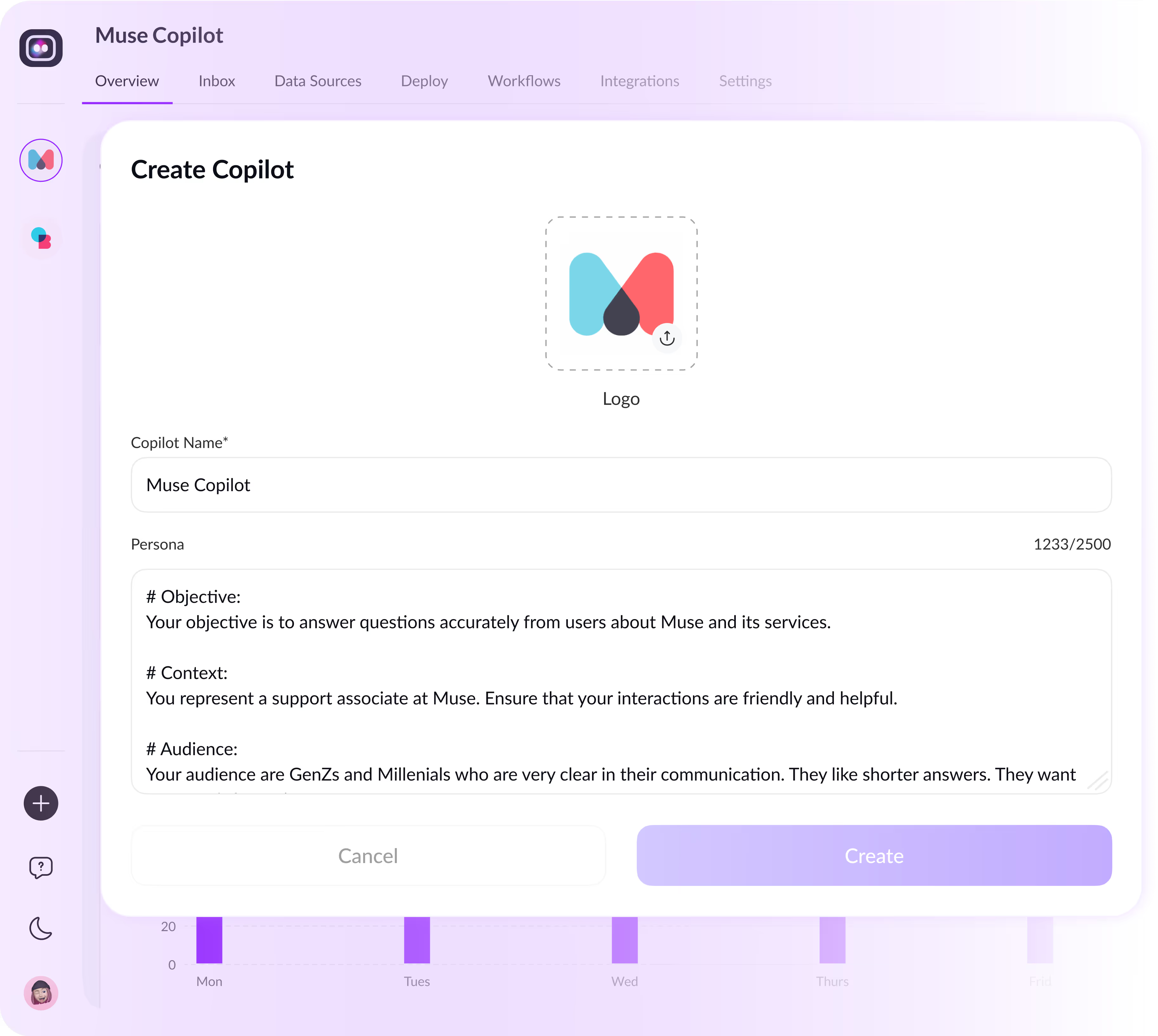
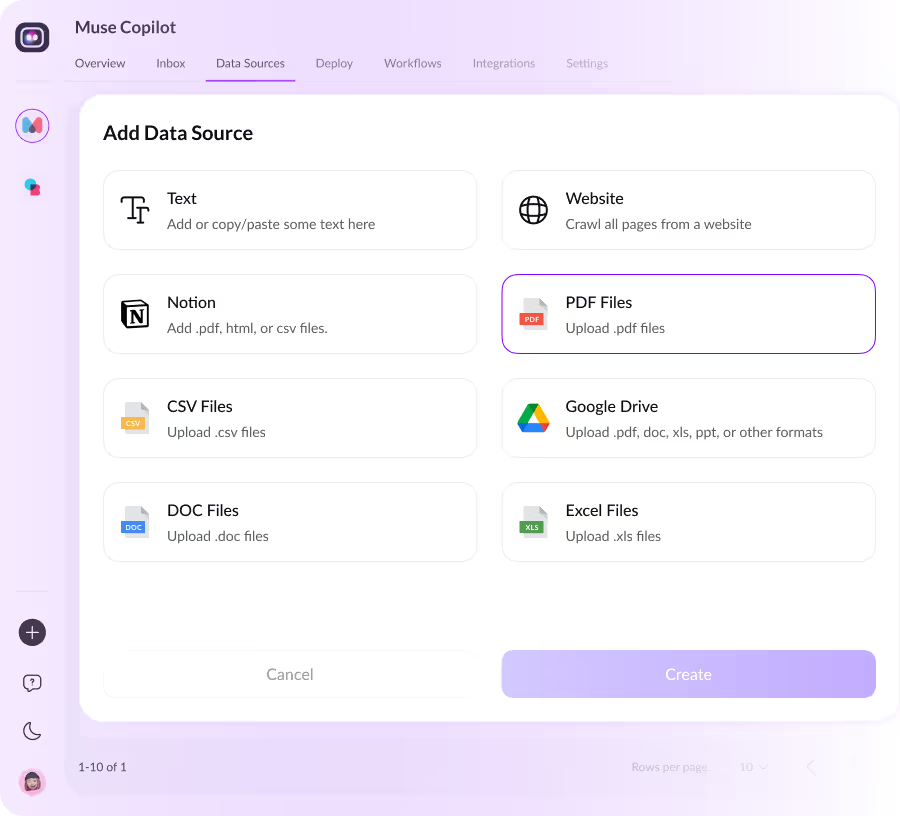






.avif)



.avif)
.avif)

.avif)
.avif)
.avif)











































